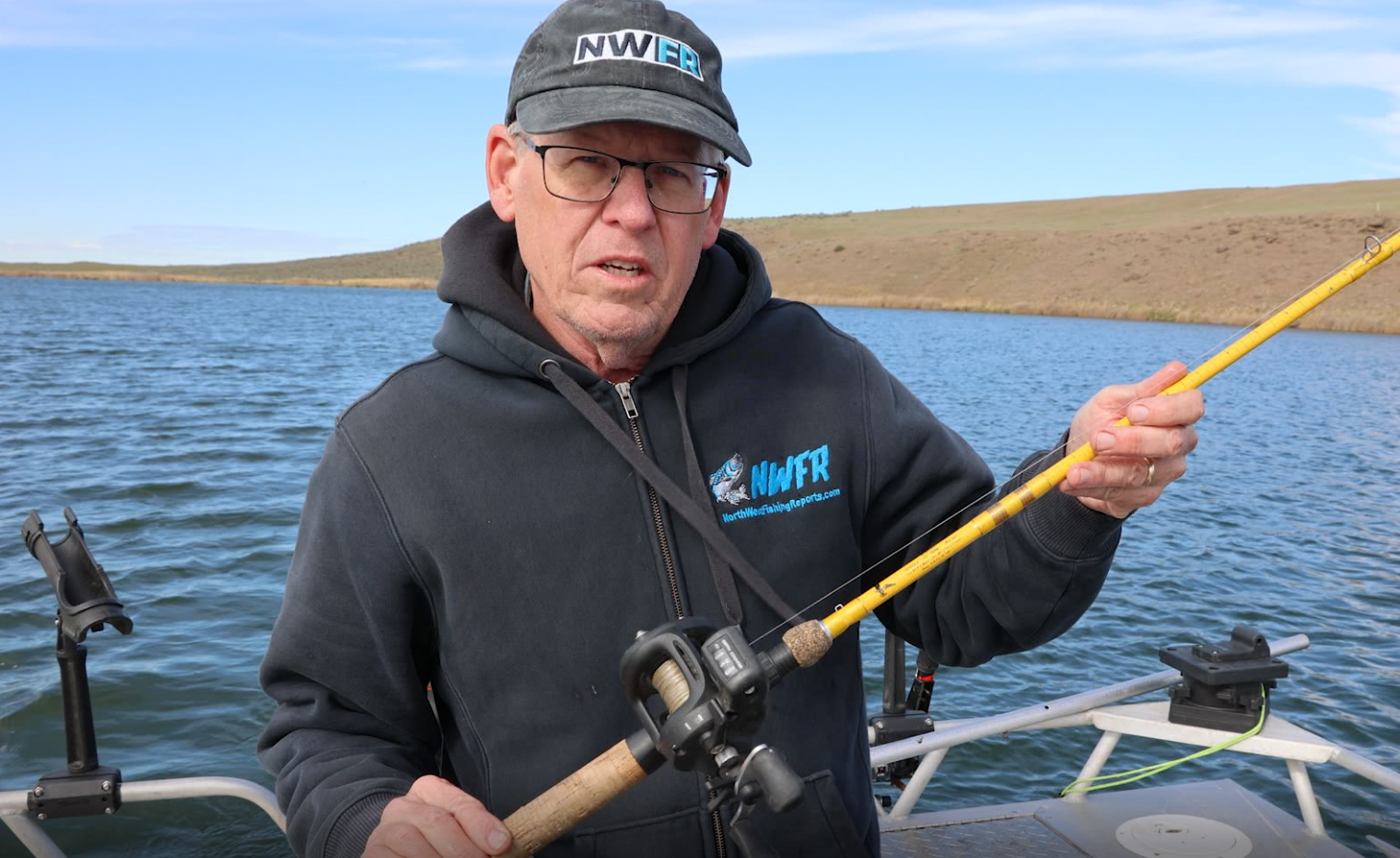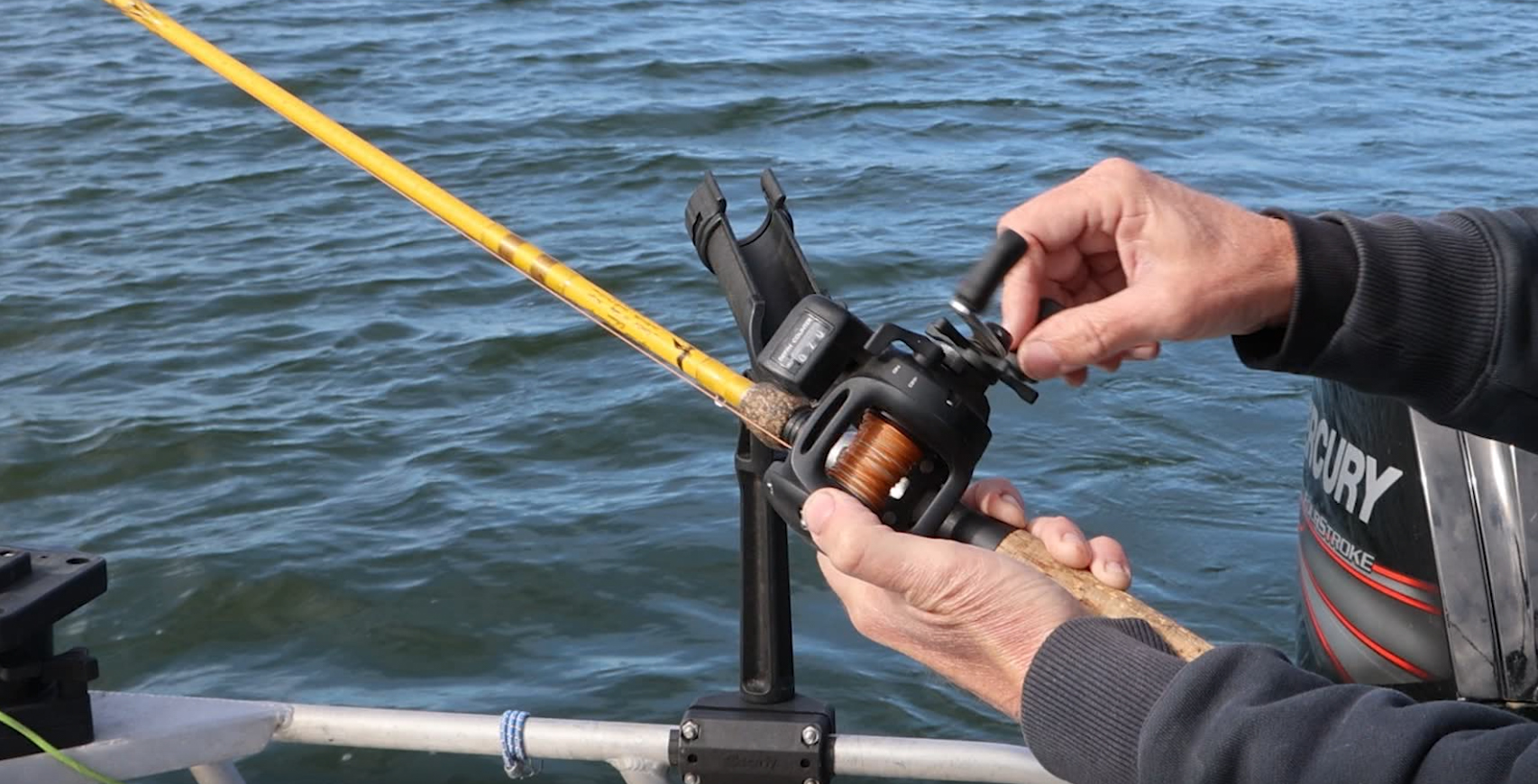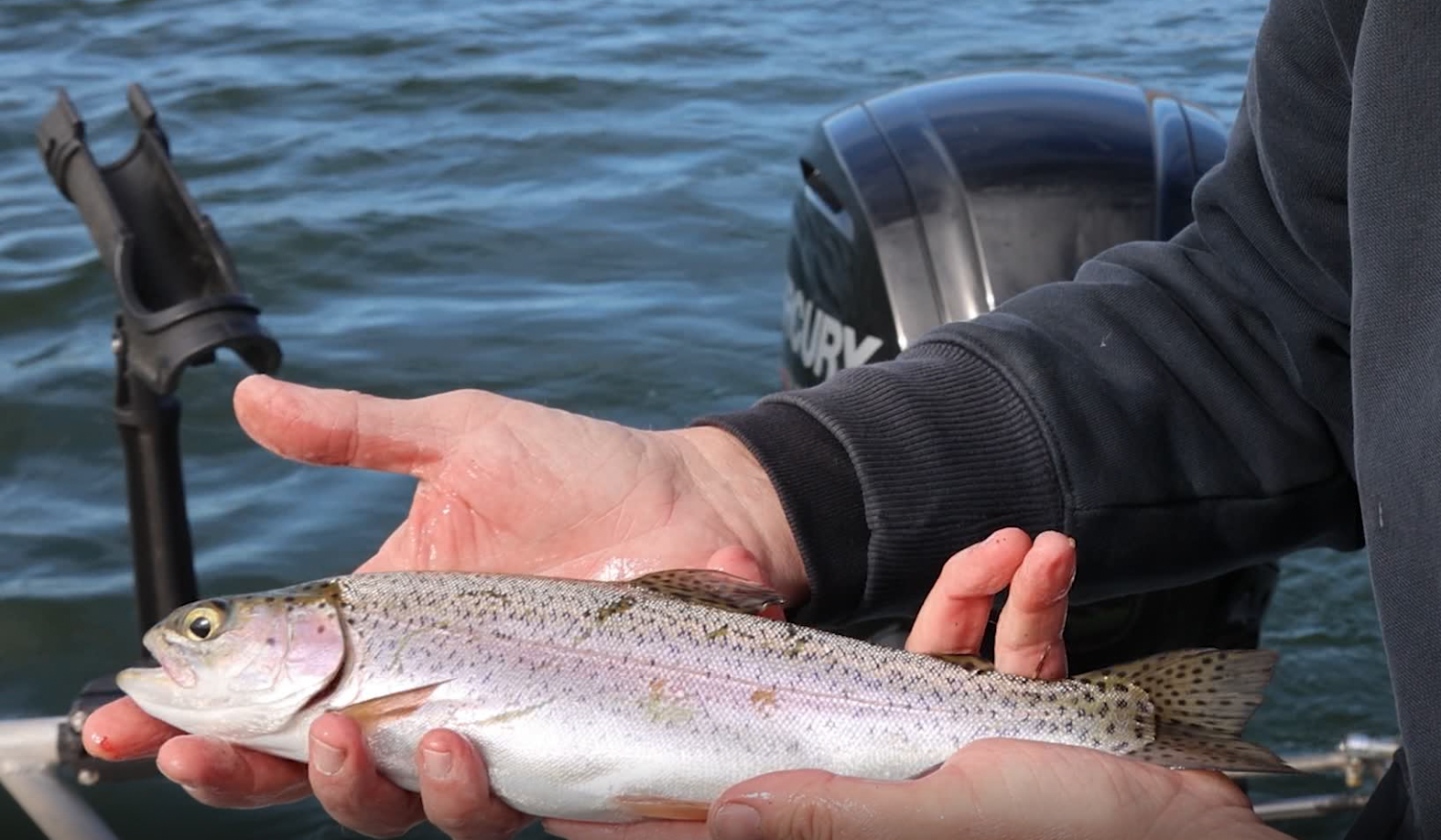Leaded Line for Kokanee and Trout
by
Mike Carey, June 03, 2021
When it comes to trolling there are multiple ways to get your gear in front of your quaries eyes. Downriggers and dropper lines are very popular for kokanee and trout fishing and are well known to anglers. They are effective and easy to use. There's another way of getting your gear down to the fish that many are less familiar with but can be even more effective. I'm talking about using leaded line for trolling. I remember first seeing leaded line being used and I will admit I was not impressed. It seemed cumbersome and not very sporting, taking away all the fun of the fight. Since that first experience though I've come to appreciate how deadly effective leaded line fishing can be, and learned that it's still a lot of fun to catch fish using leaded line.
Let’s look at what leaded line is and how you can add it to your trolling arsenal to help you catch more fish.
Leaded line is just what it sounds like - line that has a lead core. The lead allows your line to sink in the water, meaning no downriggers or dropper weights. Lead core line does the work for you. Sounds simple, right? It is, however, like most things fishing-related the devil lies in the details. Done correctly, leaded line trolling is deadly. It does require some different techniques and approaches to trolling that you should be aware of.
First, let’s talk about leaded line. Typical a spool of leaded line comes marked in ten foot long pieces. The line itself is color coded. Every thirty feet the outer coating changes color. The purpose for this color change is to allow the angler to know how much line he has out. This in turn determines how deep your gear will descend and how far back from the boat you'll be. If you ask someone fishing leaded line how deep they got their fish, they will likely tell you something like "I had two colors out". How deep leaded line will drop depends how fast you're trolling and what is on the terminal end of your line. As well as the diameter of the leaded line (yes, they come in different diameters). A big flasher or dodger is going to cause more drag, impeding the sinking of your line, compared to a simple fly or spinner.
Setting up a rod and reel for leaded line fishing is simple but a bit different from a downrigger rod/reel set-up. Leaded line is heavy and bulky. Because of this I like to use a slightly larger reel and a rod thatis able to handle the constant pressure of the lead line sinking in the water. My go to set up is an Okuma level line in the 100 series, and a 7 foot eagle claw fiberglass kokanee rod. This combination is pretty simple and inexpensive and does a good job of handling the special requirements of using leaded line. My Okuma reels are built like tanks, very sturdy and fully capable of handling the extra weight of leaded line.
When spooling leaded line on to your reel, you first want to add around a hundred feet of backing line. The backing line provides a solid way to start the spooling process and also will allow you to use all of your leaded line, rather than stopping with some still on the spool and rod. After your backing line is on you use a Willis Knot to tie the leaded line to the backing. (Willis Knot | How to tie the Willis Knot animated and illustrated | Fishing Knots (netknots.com)) Then, spool on your leaded line. Once the leaded line is on you'' again use a Willis Knot and tie on 50 feet of mono or fluro leader. The leader, of course, is what you tie your attractors and lure to, not the leaded line!
OK, your reel is spooled up and you're all set to go. Let's talk about the actual technique of trolling with leaded line and how it differs from using a downrigger or dropper set up.
First, leaded line really shines when the fish are in the top twenty feet or so of the water column. This is because, frankly, leaded line isn't going to get you much deeper than that, unless you have a whole lot of line out. Unless you’re all by yourself on a lake, having that much line out is a prescription for troubles with other boaters snagging your line. I seldom go more than three colors. That and the leader put me about 150 feet behind my boat.
The spring time and early mornings are an ideal time for targeting kokanee using leaded line. First thing in the morning those koks are often up shallow. This is the time I like to run a couple leaded lines out behind my boat. Because your line is a good 120-150 feet away, it's a great technique for boat shy fish. For trout, leaded line can be effective all day long since typical trout are found in the top 30 feet of the water column when trolling a lake.
When trolling it's important to remember that sharp turns absolutely are to be avoided with leaded line. Wide, lazy turns are the name of the game. When making your turn, watch how your line starts to drop deeper. I think this is another big benefit of leaded line. In addition to a speeding up of your outside turning line, you get a dropping and slow down effect of your inside trolling line. As you come out of your turn this line then starts climbing back up in the water column. This combination of speed change and depth change can often be just the ticket to get following fish to commit to your gear and strike.
"Fish On!"
Playing a fish with leaded line is different and requires an adjustment in your approach. When you get a hook-up, reel steady with no pumping action. The leaded line is going to cause a big drag and pumping your line will only put slack bows into it, allowing the fish to slip the hook. As you see the leaded line transition into the mono leader, be ready for the fun to begin. That fish you thought was putting up no fight in reality has likely been conserving a lot of energy, just coming in for the ride. But now as you get to the leader the fish suddenly has no weighted resistance and trust me, it will come alive! Expect some strong runs and tugs and aerial displays as the fish comes closer to your boat, realizing it's in a world of trouble!
Leaded line fishing has often out-fished my downriggers early in the morning. As the sun comes up and you see more marks on your fish finder going deeper, it's be time to put the leaded line away (if you’re kokanee fishing) and focus on your downriggers, perhaps adding stackers to the mix. With any luck those first couple of hours with leaded line will help get you started towards your limits for the day. Add leaded line fishing to your game plan and I think you'll find more fish in your boat!
Comments
Why is this comment inappropriate?
Delete this comment? Provide reason.




